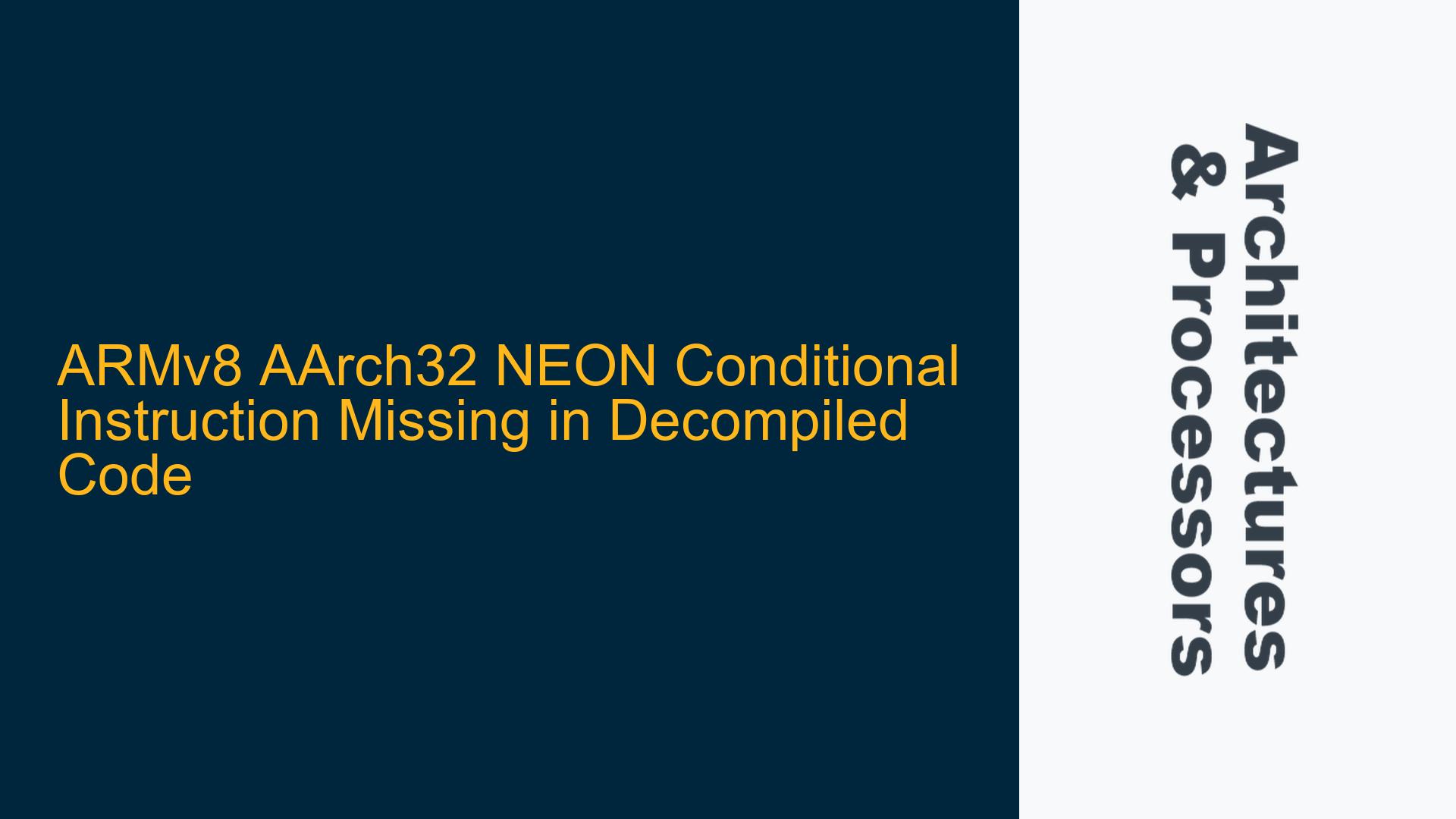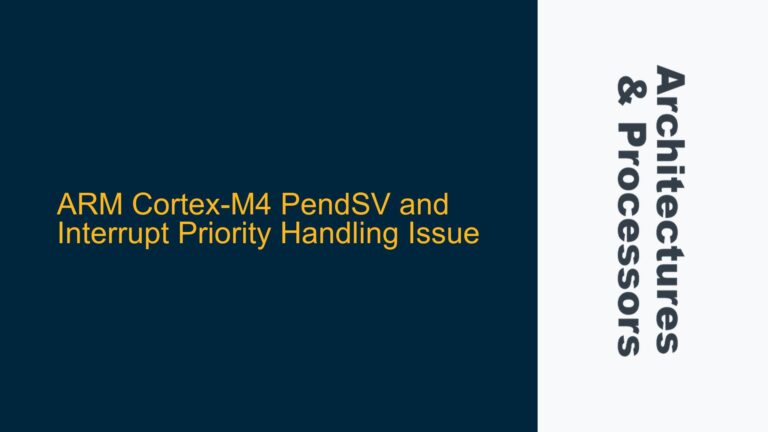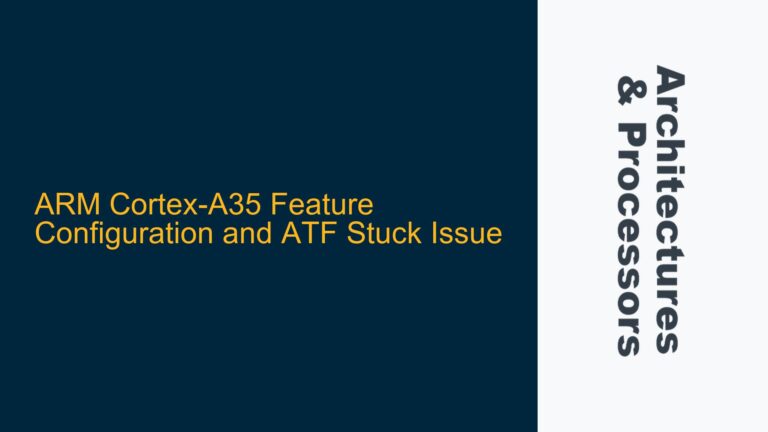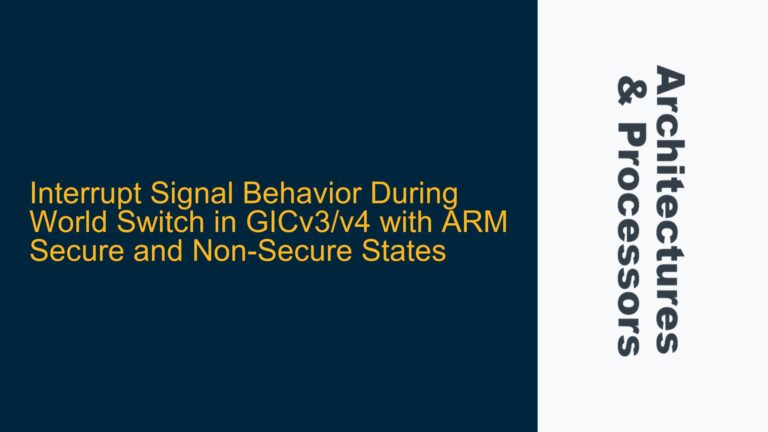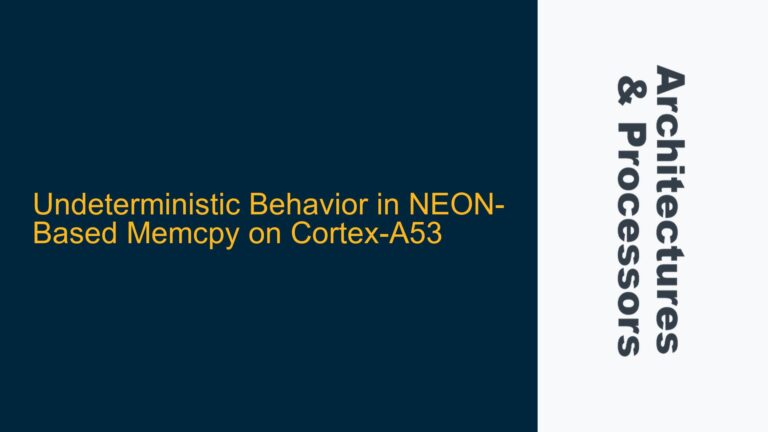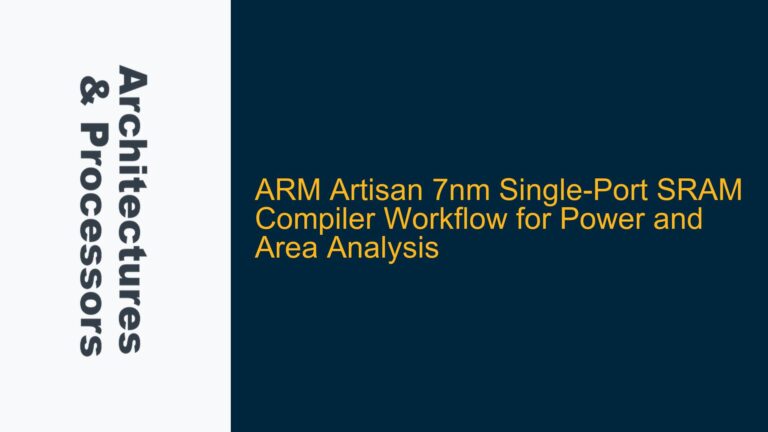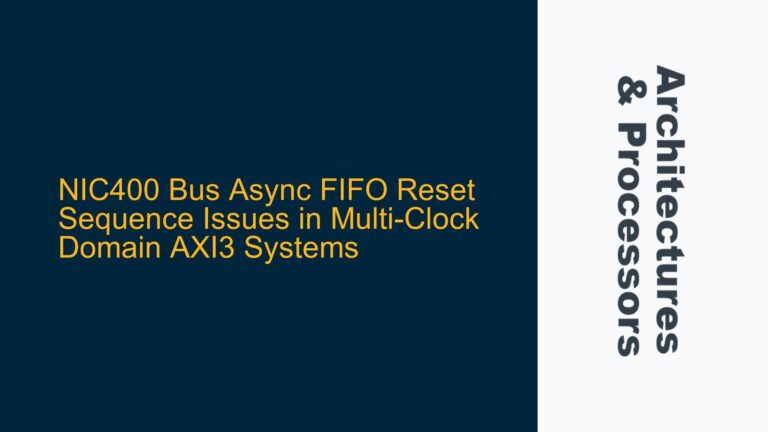ARMv8 AArch32 NEON Conditional Instruction Missing in Decompiled Code
The issue at hand involves the unexpected behavior of a NEON conditional instruction in ARMv8 AArch32 assembly code. Specifically, the VST1NE.32 instruction, which is intended to conditionally store data into memory based on the Zero (Z) flag, is being decompiled without the conditional suffix (NE). This results in the instruction being executed unconditionally, leading to a segmentation fault due to memory writes to unexpected regions. The decompiled code, as observed using the objdump tool, shows the VST1.32 instruction without the NE suffix, which is inconsistent with the original assembly code. This discrepancy suggests a potential issue with the toolchain or the way the conditional execution is being handled during the compilation process.
The original assembly code includes a loop where the SUBS instruction decrements a counter and sets the Zero flag accordingly. The VST1NE.32 instruction is intended to store the contents of NEON registers d0 and d1 into memory only if the Zero flag is not set (i.e., the counter has not reached zero). However, the decompiled code shows that the VST1.32 instruction is being executed unconditionally, which leads to incorrect memory writes and subsequent segmentation faults. This behavior is problematic because it violates the intended logic of the code, where the memory write should only occur under specific conditions.
The toolchain being used is arm-linux-androideabi-4.9, which is based on GCC 4.9. This version of the toolchain is known to have certain limitations and bugs, particularly when dealing with advanced features such as conditional NEON instructions. The issue could be related to how the toolchain handles the translation of conditional NEON instructions into machine code, or it could be a bug in the compiler itself. Additionally, the ARMv8 AArch32 architecture introduces complexities in handling conditional execution, especially when combined with NEON instructions, which may not be fully supported or correctly implemented in older toolchains.
Toolchain Limitations and Conditional Execution Handling
The root cause of the issue appears to be related to the toolchain’s handling of conditional NEON instructions. The VST1NE.32 instruction is a conditional variant of the VST1.32 instruction, which is used to store data from NEON registers into memory. The NE suffix indicates that the instruction should only be executed if the Zero flag is not set. However, the decompiled code shows that the NE suffix is missing, resulting in the instruction being executed unconditionally. This suggests that the toolchain is either not recognizing the conditional suffix or is incorrectly translating it into machine code.
One possible explanation for this behavior is that the toolchain does not fully support conditional NEON instructions in the ARMv8 AArch32 mode. The ARMv8 architecture introduces a number of new features and instructions, including enhanced support for NEON and conditional execution. However, older toolchains, such as arm-linux-androideabi-4.9, may not have complete support for these features. This could result in the conditional suffix being ignored or incorrectly handled during the compilation process.
Another potential cause is a bug in the compiler itself. Compiler bugs are not uncommon, especially in older versions, and can lead to unexpected behavior in the generated machine code. In this case, the bug could be related to how the compiler handles conditional NEON instructions, particularly in the context of the ARMv8 AArch32 architecture. The compiler may be incorrectly translating the VST1NE.32 instruction into machine code, resulting in the NE suffix being omitted.
Additionally, the issue could be related to the specific combination of instructions used in the code. The SUBS instruction sets the Zero flag based on the result of the subtraction, and the VST1NE.32 instruction is intended to conditionally execute based on the state of the Zero flag. However, the decompiled code shows that the VST1.32 instruction is being executed unconditionally, which suggests that the compiler is not correctly handling the dependency between the SUBS and VST1NE.32 instructions. This could be due to a limitation in the compiler’s ability to track and enforce such dependencies, particularly in the context of conditional execution.
Verifying Toolchain Support and Implementing Workarounds
To address this issue, the first step is to verify whether the toolchain being used (arm-linux-androideabi-4.9) supports conditional NEON instructions in the ARMv8 AArch32 mode. This can be done by consulting the toolchain’s documentation or by testing the compilation of similar code with a newer version of the toolchain. If the toolchain does not support conditional NEON instructions, it may be necessary to upgrade to a newer version that provides better support for ARMv8 features.
If upgrading the toolchain is not an option, a workaround can be implemented by manually enforcing the conditional execution of the VST1.32 instruction. This can be done by using a combination of standard ARM instructions to check the state of the Zero flag and conditionally execute the VST1.32 instruction based on the result. For example, the code can be modified to use a CMP instruction to explicitly check the value of the counter and branch to a label that skips the VST1.32 instruction if the counter has reached zero. This approach avoids the use of conditional NEON instructions and ensures that the memory write is only performed under the correct conditions.
Another potential workaround is to use inline assembly to directly control the execution of the VST1.32 instruction. Inline assembly allows for precise control over the generated machine code and can be used to enforce the conditional execution of the VST1.32 instruction. However, this approach requires a deep understanding of the ARM architecture and the specific behavior of the instructions being used. It is also important to ensure that the inline assembly code is correctly integrated with the rest of the program to avoid introducing new issues.
In addition to these workarounds, it is important to thoroughly test the modified code to ensure that it behaves as expected. This includes verifying that the VST1.32 instruction is only executed when the counter has not reached zero and that no segmentation faults or other memory-related issues occur. Testing should be performed on the target hardware to ensure that the behavior is consistent with the intended logic of the code.
Conclusion
The issue of the missing NE suffix in the decompiled VST1.32 instruction is likely due to limitations or bugs in the arm-linux-androideabi-4.9 toolchain. To resolve this issue, it is recommended to verify the toolchain’s support for conditional NEON instructions and consider upgrading to a newer version if necessary. If upgrading is not an option, workarounds such as manually enforcing conditional execution or using inline assembly can be implemented to ensure that the VST1.32 instruction is only executed under the correct conditions. Thorough testing is essential to confirm that the modified code behaves as expected and does not introduce new issues. By addressing the root cause of the problem and implementing appropriate solutions, the segmentation fault and incorrect memory writes can be resolved, ensuring the reliable operation of the ARMv8 AArch32 code.
